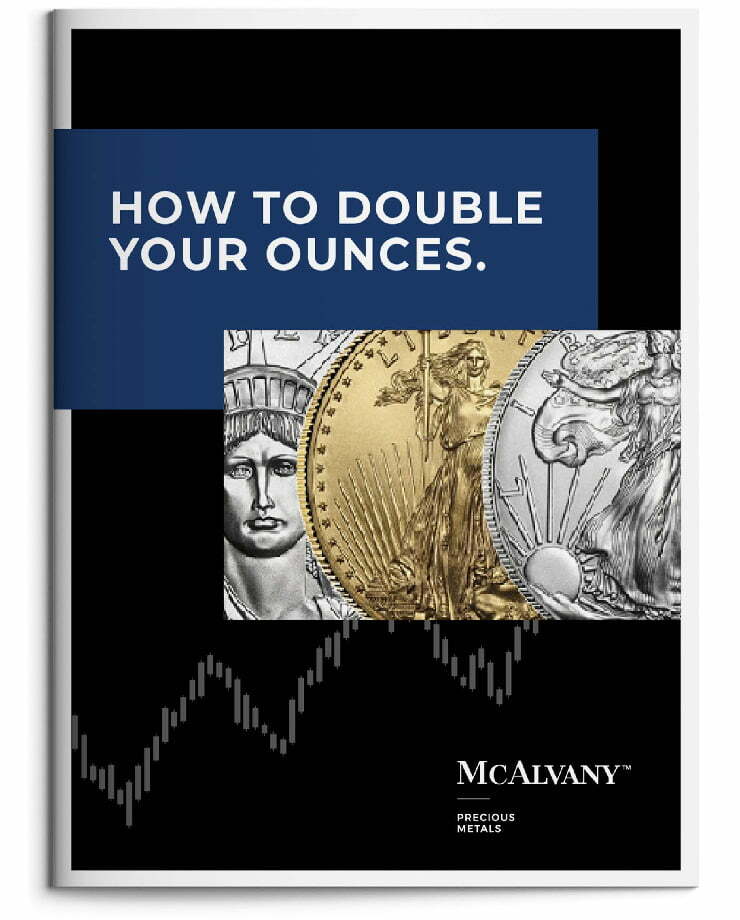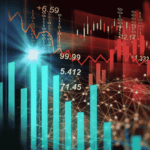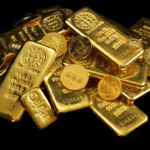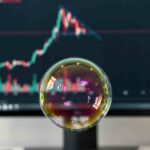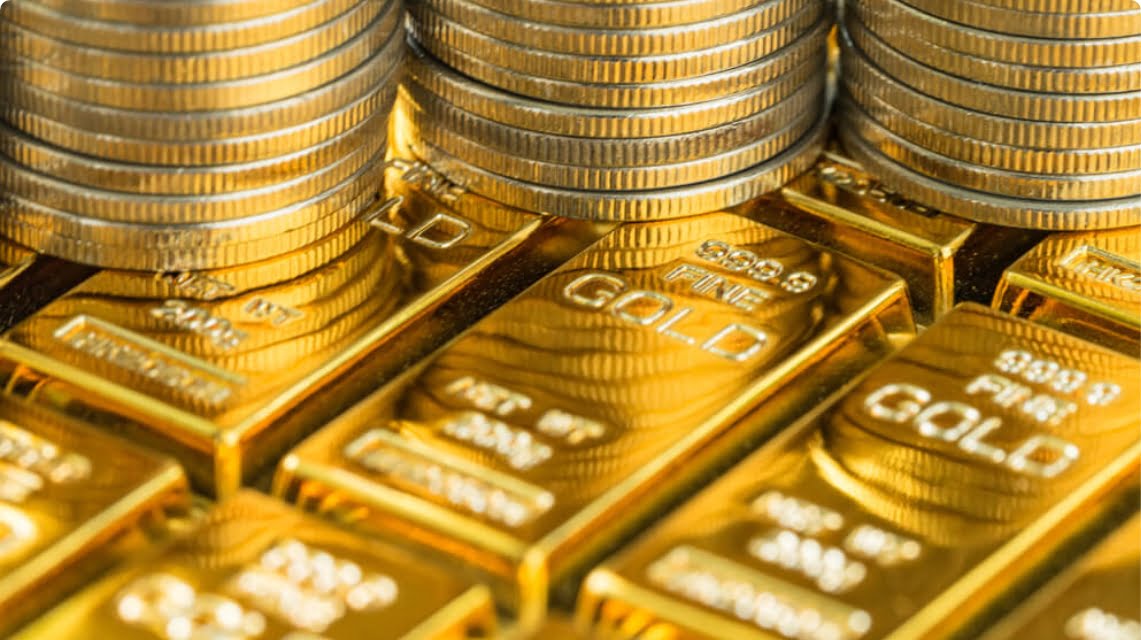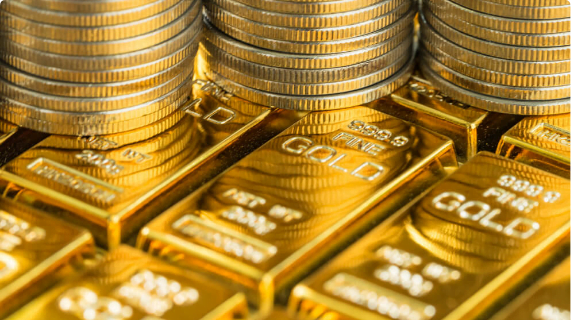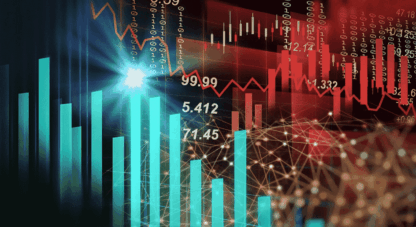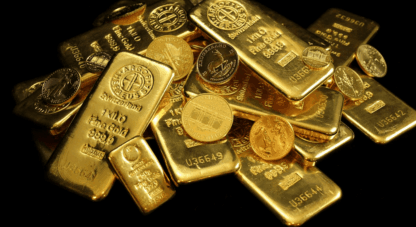What does gold tell us about the current and future state of the world?
Gold set new all-time highs in March of 2025 at $3,145.00, finishing the first quarter up 19%. In fact, gold set 40 new all-time highs in 2024, closing out the year with a 25.5% return.
Gold is unlike many other assets in that the yellow metal serves as a barometer for stress, uncertainty, and future financial market volatility. While other assets provide information about their associated markets, gold provides information about a broader scope of interests. These include the global financial markets, capital flows and trade settlement, domestic public policy, international relations, currency stability, and much more.
What does a rise in the price of gold signal? Can we get insight from this relatively small and idiosyncratic market to help with business decision making over the next several years? Can we learn lessons from the gold market and map strategic opportunities and pitfalls?
I’ve been privileged to have a ringside seat and observe the answers to these questions firsthand. Our family business (Mcalvany Precious Metals) has brokered precious metals for 53 years, placing many billions of dollars into physical metals. Decades ago, it participated with Senator Jesse Helms in the re-legalization process in the mid 1970s. I am also a student of history, of interest rates, of monetary regimes, and of financial markets, and would summarize this paper as follows: We are at a crossroads both nationally and globally. The gold market has been commenting on this fact for some time now based on several millennia of integral experience in the economies of empires and global trade systems along with household finance. Ignoring its message would be a mistake.
Historical Context
Let’s start with a little history. Money has evolved over time, and gold runs like a thread throughout that history. The Lydians were the first to move from granaries to coins as a store of value and medium of exchange. In so doing the Lydians shifted economics from a system of top-down control (think of Joseph and the store houses of grain, centrally managed and controlled) to a system of bottom-up, market-driven trading. Monetary dynamism replaced military dynamism, and ended social dependence on the crop cycle. The Lydian market economy was transformed by the creation of gold coins. Such coinage freed merchants to be more mobile and transaction volumes to multiply using a uniform medium of exchange—the first of its kind.
The Greeks took the baton and ran with it. New theories of organization and cooperation were developed by Xenophon with the writing of the first book on economics: Oeconomicus. What the Greeks did for commerce through the Agora and the elevation of individual agency, the Romans built on with the use and development of credit. The Roman innovation was to step beyond the limited supplies of gold and silver to a limitless manifestation of money in the form of credit. Of course, with the redefinition of money to include credit came the introduction of the credit cycle and a series of booms and busts that have echoed through time to the present. Speculators able to access more than just the coins they possess can increase the scale of their investments in income-producing enterprises. While credit enabled the Roman empire to rapidly expand, it also tied assets to liabilities in a daisy chain that at various points in the credit cycle became precarious.
Credit enabled greater economic growth, but also introduced a fresh fragility into economic cycles. Under Nero and later Gallienus, the credit cycle was stretched. Both emperors chose to devalue the currency. By 300 AD (CE), all historical references to deposit banking disappeared. No one trusted the underlying currency, and people wouldn’t dare leave money on deposit. Many Roman historians connect the removal of gold and silver content from Roman coinage to the declining empire losing control. An interesting historical note, and one that serves as a pivot for our discussion, is that Roman merchants began invoicing in commodities rather than money. I will address this later in the paper in terms of Treasury recycling being displaced today by gold recycling—terms that will become clear upon their discussion.
The view from three thousand years ago is helpful as we move to the current context. Three points in particular are worth mentioning: 1) What has been and continues to be the case is that the definition of money is always evolving. 2) The use and abuse of credit has been cyclical since its creation. And lastly, 3) economic growth is influenced by the supply of money, which has opened the door to experimenting with an ever-expanding base of money and credit—for better or for worse.
Let’s consider the gold market in the present context through the lenses of currency stability, international relations, domestic policy, capital flows and trade settlement, and global financial markets.
Currency Stability
Gresham’s law is a monetary principle that states, “bad money drives out good money.” This means that when one form of money is viewed as inferior, people tend not to hold onto it. It is exchanged for the superior form, and the good money disappears from circulation—hoarded for a rainy day by millions of people.
When currency stability concerns emerge, savers seek alternatives that preserve their purchasing power. Under bimetallistic systems, that might include shifting from silver to gold. Under fiat systems (no tangible backing for a paper currency), capital flows to a superior fiat. An example in recent years is Argentine savers keeping safe deposit boxes full of US dollars.
If inflation thresholds exceed tolerable levels, capital moves to safety. Only in the present era (since 1971–1976—Nixon’s closing of the gold window, and the end of Bretton Woods) have fiat currencies lost a stable reference to measure their value against. Currencies now float and have value relative to other constantly shifting currencies. Since the Lydian empire, gold had been the enduring reference point. Gold demand in the present period tends to rise when devaluation concerns increase and competitive devaluations between trade partners are a real threat. Even though gold is no longer a part of our monetary system, it serves as a signal for growing concerns that bad money is proliferating, and it takes on its historical good-money role.
International Relations
Now we’ll take a look through the lens of international relations. Peace encourages cooperation and enables trade. Long periods of peace stimulate confidence, risk taking, and business adventurism that creates wealth. Under these conditions capital flows freely and the cost of capital declines.
Looking at the last several hundred years, there have been two periods of globalization: first, 1846–1914, but trailing into the late 1920s and 1930s. The second period of globalization began in the 1960s and1970s and arguably is ending now.
During the 19th century the global economy was integrated and becoming more so all the time. It was a period that reinforced the free flow of people, ideas, information, and capital. Between 1871 and 1915, 36 million people left Europe; globalization and migration went hand in hand. The first transatlantic cable was laid in 1866. Steam ships and ocean liners were on the move, rails were being built everywhere at a feverish pace. Between 1865 and 1916, the rail network in the US expanded from 35,000 miles of track to 254,000 miles.
Cultural integration and an increase in economic activity was enabled by technological advancement and risk taking. With cooperation and peace came a reduction in financing costs and aggressive investment in the future. As the price of time comes down, people squeeze more of the future into the present. Gold was a lubricant for trust and trade throughout that period, encouraging cooperation. The largest gold reserves were in London, and London was the banker to the world in the period of Globalization 1.0
World War I was the first shock to globalization 1.0, and by the late 1920s nationalism, protectionism, and deglobalization had emerged. Senators Hawley and Smoot promoted a bill that in its final version had 21,000 tariffs attached to it. The world was in depression with a collapse in free trade and the free flow of capital. Devaluation became a default monetary reaction to cover the costs of war and the rising costs of social safety nets.
Gold was not the lubricant for globalization 2.0 machinery. There wasn’t enough of it to meet the needs of a rapidly growing demography. Credit became king, and particularly so as rates declined for over four decades from 1982-2022.
Past is somewhat prologue. The unwind of globalization 1.0 was certainly attributable to global conflict, but the penchant for guarding domestic economic interests was alive then, and it’s very much alive now. As we transition away from Globalization 2.0, the uncertainties stirred by diminished free trade and an increase in tariffs is driving demand for liquid and safe allocations into gold.
One can argue that during periods of expansion gold is dead weight. In these periods gold seems to carry too high a cost—opportunity cost. However, during periods of geopolitical strain and trade war stress, gold comes into focus as a valuable reserve asset. The threat of competitive currency devaluations among trade partners seeking an export advantage encourages moving to gold as a superior reserve asset and stable currency alternative. That dynamic is very much in play today.
Domestic Policy
Prioritizing domestic policies at the expense of international trade cooperation is really part of the adoption of democratic political structure and has been a notable trend throughout the 20th century. With the rise of suffrage on a global basis has come an elevated attention towards constituents. It’s the law of the political jungle. Fail to take care of your voters, and you will fail to get reelected. Therefore, budget deficits and inflationary monetary policies have coalesced to enable the modern politician to cater to voter preferences and economic needs. Doing whatever it takes to support economic growth and full employment guides the bias toward loose fiscal and monetary policy, the risk being the creation of bad money in the process.
The current US administration under president Trump has set out to rebuild the industrial base in America and drive income growth for the middle class. Proposed changes (most clearly articulated by Stephen Miran) come at the expense of a world order where previously globalization and free trade had advanced domestic consumption priorities over domestic production. Now with domestic production displacing consumption, there is an increased likelihood of US dollar devaluation as a complimentary tool to the tariff regime being put in place.
Gold is catching the attention of a growing number of investors unsettled by the changes being implemented and uncertain as to the time frames in which they might succeed. In the interim, this re-engineering of the global trade system, consistent with domestic economic priorities, supports gold as a reliable reserve asset for those on a wait-and-see footing.
Capital Flows and Trade Settlement: The New “Gold Recycling”
Jeff Currie, former Goldman Head of Commodity Research, now with the Carlyle Group, has observed that the nature of the 50-year petrodollar system is changing. Major commodity producers are no longer automatically recycling their dollar-denominated commodity revenues back into US Treasuries. A similar behavior is occurring with imported finished goods where our trade surplus partners are not automatically recycling their surpluses into Treasuries.
“For the first time ever, that dollar recycling is not occurring. And what is replacing it? I like to call it gold recycling. It explains a lot, why gold prices are as strong as they are. And what is the evidence of that is that the emerging markets—the BRIC countries—all met with Saudi Arabia and other key participants [in] November of last year, and discussed how they’re going to trade with one another using local currencies. And then whatever it nets out in settling, they would settle in gold…you’re unlikely to see that dollar recycling playing out probably ever again.”
This idea of petrodollar and trade dollar recycling coming to an end has profound implications for our budget deficit financing. It has profound implications for the dollar. It has profound implications for the gold market as well, as Currie suggests a new source of demand for gold.
Strong evidence that this is already occurring is in the above chart showing a ratio of Treasuries to gold. Charles Gave noted as far back as 2018 that “If gold outperforms the dollar bull market, it means that people are starting to be worried about the US dollar. They would rather own gold than a bond giving them a yield.”
While this preference does not immediately compromise the dollar as the world’s reserve currency, it does complicate it and erode its strength at the margins. Additionally, the preference by global central banks to hold more gold as a reserve asset has increased notably since 2009, and dramatically since 2022. Reserve asset managers are interested in the control they maintain with a physical asset like gold, different than paper assets which are held on deposit in a digital landscape that leaves them vulnerable to seizure—or sanctions, as the Russians experienced in 2022 with over 300 billion dollars being taken by the US Treasury. Since that event, central bank reserve asset managers have doubled their annual pace of accumulation from 500 tons per year to over 1,000 tons per year. Trust has diminished, and a new urgency has been placed on control of a liquid asset outside the financial markets.
Global Financial Markets.
My final observation on the strength of the gold market comes through the lens of the financial markets. As a non-correlated asset, gold is considered a safe haven—like Treasuries—during periods of market turbulence. When liquidity is abundant, risk assets perform very well. When liquidity becomes scarce, risk assets tend to suffer; gold becomes the safe haven of choice, and outperforms. There is no crystal ball to know precisely how the financial markets will perform in the years ahead. The important measures to be mindful of are valuation metrics and measures of liquidity. If domestic and global events create sufficient uncertainty, liquidity is likely to shrink and risk assets are likely to underperform. To the degree that investors migrate to safe havens such as gold, there will be pockets of outperformance.
In summary
Gold surpassing a 25% return last year and rising over 19% year-to-date is signaling that structural changes are occurring, and smart money is positioning ahead of them. Seen through the lenses of currency stability, international relations, domestic policy, capital flows and trade settlement, and global financial markets, gold is signaling an important historical inflection point.
We still don’t know the degree to which the US dollar will remain strong. There is currency uncertainty. We do know that our world is rapidly changing, and international relations specialists are concerned that much of the post-World War II order is coming undone. There is great geopolitical uncertainty. US domestic policies are intertwined with global trade dynamics and will be a big factor in geopolitical events of the next several years. Uncertainty reigns supreme. The gold recycling thesis put forward by Jeff Currie is symptomatic of an unsettled trade environment that becomes more unsettled by the day.
Lastly, global financial markets have remained buoyant in light of the structural changes afoot. If that changes and financial markets mean-revert from a valuation perspective, or contract due to shrinking liquidity, gold is a place investors have traditionally flocked to. While we have seen central bank demand increase dramatically in recent years, and institutional interest has increased at the same time, to date we have seen very little retail investor rotation from stocks and bonds to bullion.
Gold remains an under-owned asset among the general public. I don’t think that will remain the case. Gold has been sending signals for some time. Understanding the variegated meaning is a challenge, but if this analysis is correct, there is some sort of reset ahead with critical implications for the gold market.
